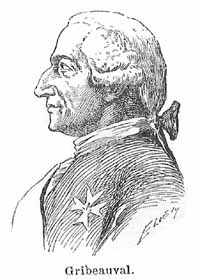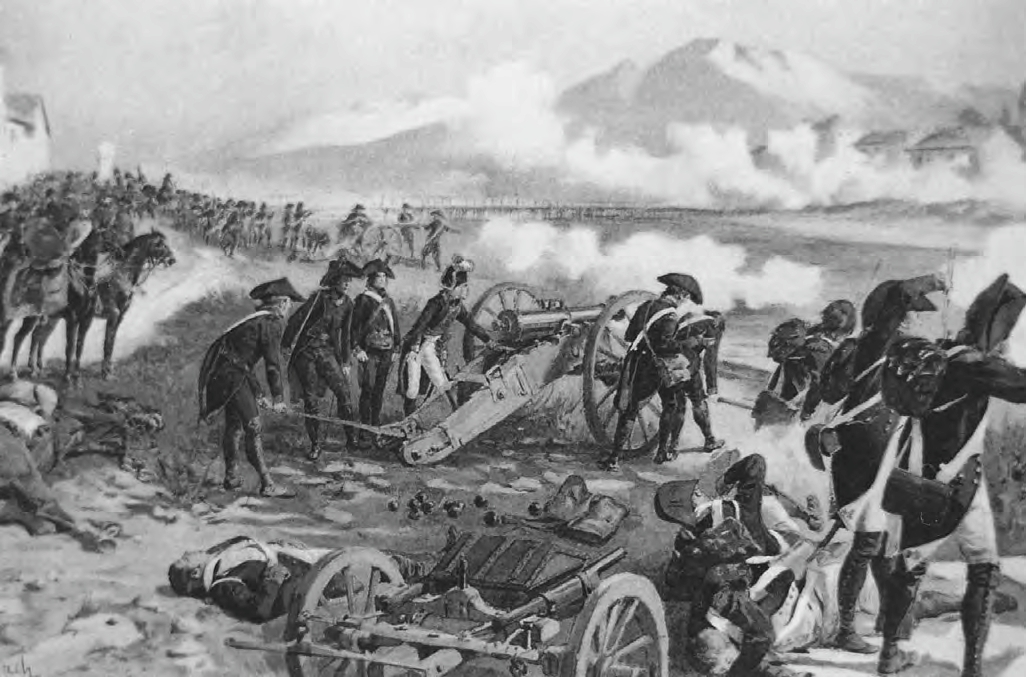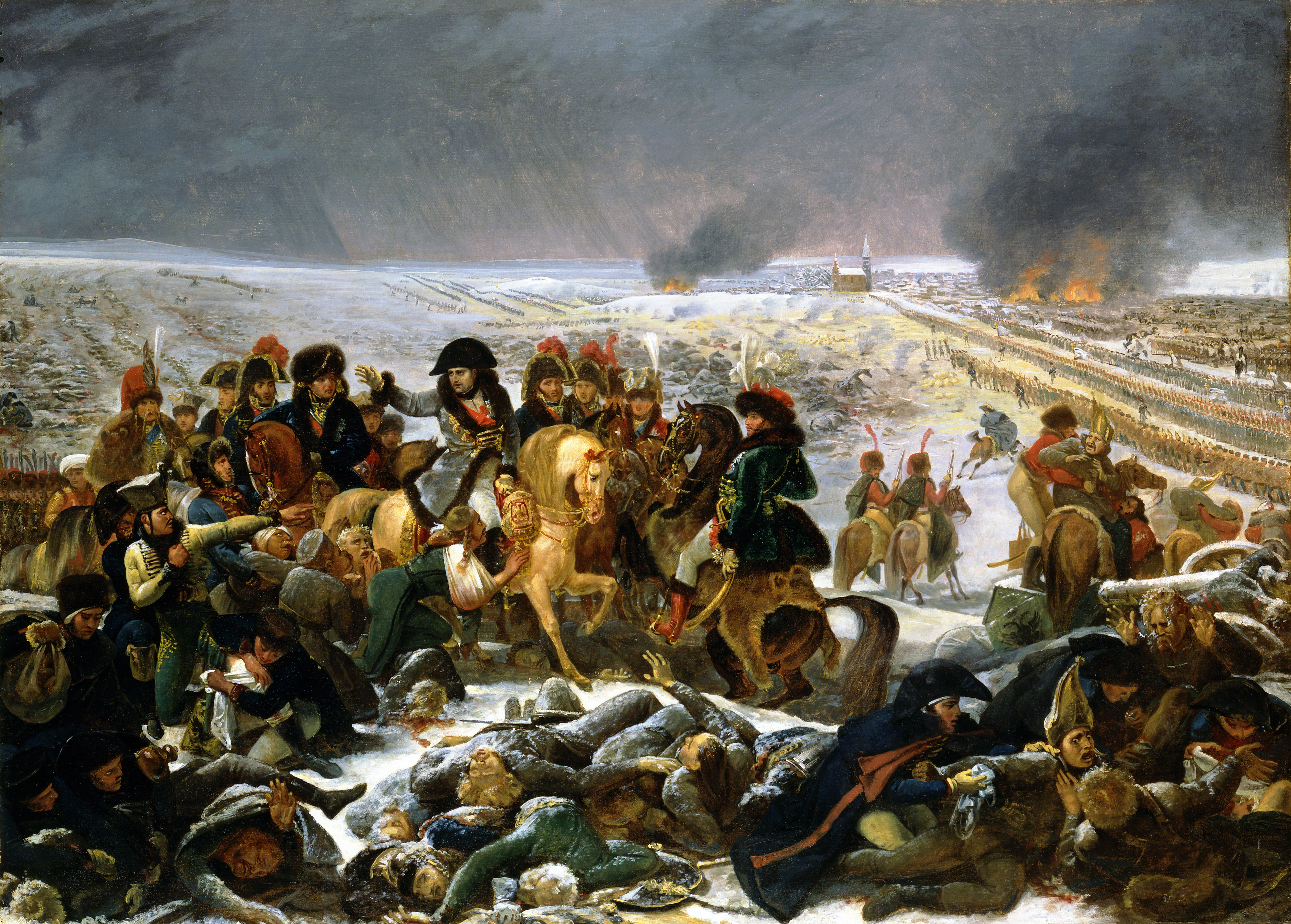|
VII Corps (Grande Armée)
The VII Corps of the ''Grande Armée'' was a French military unit that existed during the Napoleonic Wars. It was formed in 1805 and assigned to Marshal Pierre Augereau. From 1805 to 1807, Augereau led the VII Corps in the War of the Third Coalition and the War of the Fourth Coalition. It was disbanded after being nearly wiped out at the Battle of Eylau in February 1807 and its surviving troops were distributed to other corps. In 1812, a new VII Corps composed of soldiers from Saxony was created for the invasion of Russia and General Jean Reynier took command. This formation survived to fight during the War of the Sixth Coalition, but ceased to exist after the Battle of Leipzig in October 1813 due to the defection of the Saxons. The VII Corps was recreated during the 1814 campaign in France and assigned to Marshal Nicolas Oudinot. The formation consisted of one Young Guard division and two regular divisions of Peninsular War veterans. Order of battle October 1806 Marshal Pierre ... [...More Info...] [...Related Items...] OR: [Wikipedia] [Google] [Baidu] |
Corps
Corps (; plural ''corps'' ; from French , from the Latin "body") is a term used for several different kinds of organization. A military innovation by Napoleon I, the formation was first named as such in 1805. The size of a corps varies greatly, but from two to five divisions and anywhere from 40,000 to 80,000 are the numbers stated by the US Department of Defense. Within military terminology a corps may be: *an military organization, operational formation, sometimes known as a field corps, which consists of two or more division (military), divisions, such as the I Corps (Grande Armée), , later known as ("First Corps") of Napoleon I's ); *an administrative corps (or Muster (military), mustering) – that is a #Administrative corps, specialized branch of a military service (such as an artillery corps, a medical corps, or a force of military police) or; *in some cases, a distinct service within a national military (such as the United States Marine Corps). These usages often ov ... [...More Info...] [...Related Items...] OR: [Wikipedia] [Google] [Baidu] |
Peninsular War
The Peninsular War (1807–1814) was the military conflict fought in the Iberian Peninsula by Spain, Portugal, and the United Kingdom against the invading and occupying forces of the First French Empire during the Napoleonic Wars. In Spain, it is considered to overlap with the Spanish War of Independence. The war started when the French and Spanish armies invaded and occupied Portugal in 1807 by transiting through Spain, and it escalated in 1808 after Napoleonic France occupied Spain, which had been its ally. Napoleon Bonaparte forced the abdications of Ferdinand VII and his father Charles IV and then installed his brother Joseph Bonaparte on the Spanish throne and promulgated the Bayonne Constitution. Most Spaniards rejected French rule and fought a bloody war to oust them. The war on the peninsula lasted until the Sixth Coalition defeated Napoleon in 1814, and is regarded as one of the first wars of national liberation. It is also significant for the emergence of larg ... [...More Info...] [...Related Items...] OR: [Wikipedia] [Google] [Baidu] |
François-Joseph Lefebvre
François-Joseph is a given name, and may refer to: * François-Joseph Amon d'Aby (1913–2007), Ivoirian playwright and essayist * François-Joseph de Beaupoil de Sainte-Aulaire (1643-1742), French poet and army officer * François-Joseph Bélanger (1744-1818), French architect and decorator * François-Joseph Bérardier de Bataut (1720-1794), French teacher, writer and translator * François-Joseph Bissot (1673–1737), Canadian merchant, navigator and a co-seigneur of Mingan; son of François Byssot de la Rivière * François-Joseph Bressani (1612-1672), Jesuit priest * Général François-Joseph Chaussegros de Léry (1754-1824), Canadian Engineer-in-Chief and Commander-in-Chief of Napoleon's Armies Armies in Holland * François-Joseph d'Offenstein (1760-1837), French general and military commander * François-Joseph de Champagny (1804–1882), French author and historian * François-Joseph Duret (1732-1816), French sculptor * François-Joseph Fétis (1784-1871), Belgian music ... [...More Info...] [...Related Items...] OR: [Wikipedia] [Google] [Baidu] |
Canon De 8 Gribeauval
The Canon de 8 Gribeauval or 8-pounder was a French cannon and part of the Gribeauval system developed by Jean Baptiste Vaquette de Gribeauval. The Old French pound (french: livre) was 1.07916 English pounds, making the weight of shot about 8.633 English pounds (or 8 lb 10 oz). The 8-pounder was the medium weight cannon of the French field artillery; the others were the light Canon de 4 Gribeauval and the heavy Canon de 12 Gribeauval. Replacing the older Vallière system, the Gribeauval system was introduced in 1765 and the guns were first employed during the American Revolutionary War. The most extensive use of Gribeauval guns was during the French Revolutionary Wars and the Napoleonic Wars. The 8-pounder could be found in divisional reserves, advanced guards or army artillery reserves. Emperor Napoleon began to phase out the 8-pounder by increasing the proportion of 12-pounders in his artillery. The emperor began switching calibers to the handier 6-pounder piece, utilizing captured ... [...More Info...] [...Related Items...] OR: [Wikipedia] [Google] [Baidu] |
Canon De 4 Gribeauval
The Canon de 4 Gribeauval or 4-pounder was a French cannon and part of the artillery system developed by Jean Baptiste Vaquette de Gribeauval. The Old French pound (French: livre) was 1.079 English pounds, making the weight of shot about 4.3 English pounds. In the Gribeauval era, the 4-pounder was the lightest weight cannon of the French field artillery; the others were the medium Canon de 8 Gribeauval and the heavy Canon de 12 Gribeauval. The Gribeauval system was introduced in 1765 and the guns were first employed during the American Revolutionary War. The most large-scale use of Gribeauval guns occurred during the French Revolutionary Wars and the Napoleonic Wars. At first a pair of 4-pounders were assigned to each infantry battalion and were often called battalion pieces. Later, Emperor Napoleon took the guns away from the infantry units and began to replace the 4-pounder with the 6-pounder, using captured guns as well as newly cast French cannons. However, as the French infan ... [...More Info...] [...Related Items...] OR: [Wikipedia] [Google] [Baidu] |
Antoine Jean Auguste Durosnel
Antoine is a French given name (from the Latin ''Antonius'' meaning 'highly praise-worthy') that is a variant of Danton, Titouan, D'Anton and Antonin. The name is used in France, Switzerland, Belgium, Canada, West Greenland, Haiti, French Guiana, Madagascar, Benin, Niger, Burkina Faso, Ivory Coast, Guinea, Senegal, Mauritania, Western Sahara, Morocco, Algeria, Tunisia, Chad, Central African Republic, Cameroon, Equatorial Guinea, Gabon, Republic of the Congo, Democratic Republic of the Congo, Burundi, and Rwanda. It is a cognate of the masculine given name Anthony. Similar names include Antaine, Anthoine, Antoan, Antoin, Antton, Antuan, Antwain, Antwan, Antwaun, Antwoine, Antwone, Antwon and Antwuan. Feminine forms include Antonia, Antoinette, and (more rarely) Antionette. As a first name *Antoine Alexandre Barbier (1765–1825), a French librarian and bibliographer *Antoine Arbogast (1759–1803), a French mathematician *Antoine Arnauld (1612–1694), a French theologian, ... [...More Info...] [...Related Items...] OR: [Wikipedia] [Google] [Baidu] |
Jacques Thomas Sarrut
Jacques Thomas Sarrut (16 August 1765 – 26 June 1813) joined the French army and became a division commander in the First French Empire of Napoleon. He led a regiment at Hohenlinden, a brigade at Jena, Bussaco, and Fuentes de Oñoro, and a division at Salamanca. He was mortally wounded while leading his soldiers against the Anglo-Allied army at the Battle of Vitoria. Sarrut is one of the names inscribed under the Arc de Triomphe on Column 21. Revolution Sarrut was born on 16 August 1765 at Canté in what is now the department of Ariège, France, which is on the border with Spain. He became Chef de Brigade (colonel) of the 3rd Demi-Brigade de bataille on 28 May 1794. He transferred to command of the 8th Infantry Demi-Brigade on 19 February 1796. That year the 8th was serving with the Army of the North, but in 1797 the unit transferred to the Army of Germany. In 1798, the demi-brigade switched between the Army of Mainz, the Army of the Danube, and the Army of the Rhine. At th ... [...More Info...] [...Related Items...] OR: [Wikipedia] [Google] [Baidu] |
François Pierre Joseph Amey
François Pierre Joseph Amey (2 October 1768 – 16 November 1850) became a French division commander during the Napoleonic Wars. He enlisted in the French Royal Army in 1783 and joined a volunteer battalion in 1792. He won promotion to general of brigade in 1793 during the War in the Vendée. He held a command during the period of the infernal columns and his career became obscure until 1799 when he supported Napoleon's coup. He went on the Saint-Domingue expedition in 1802–1803 and later filled posts in the interior. In 1806–1807 he led a brigade at Jena, Golymin and Eylau where he was wounded. Sent to Spain in 1808 in command of German troops, Amey fought at the Third Siege of Gerona the following year. In 1812 he participated in the French invasion of Russia and led his troops at the First and Second Battles of Polotsk. He was promoted to general of division and fought at the Berezina. He fought at Arnhem in fall 1813. While leading a division of recruits, he was wounded ... [...More Info...] [...Related Items...] OR: [Wikipedia] [Google] [Baidu] |
Étienne Heudelet De Bierre
Étienne Heudelet de Bierre (12 November 1770 – 20 April 1857) joined the French army as a volunteer lieutenant in 1792. A year later he became a staff officer for a number of generals before becoming Laurent Gouvion Saint-Cyr's chief of staff in 1795. He fought under Jean Victor Marie Moreau in the 1796 campaign and fought at Kehl. He became a general officer in 1799, leading his troops at the First and Second battles of Zurich. In April 1800 he was a brigade commander in Jean Victor Tharreau's division in Moreau's army. In December of that year he fought at Hohenlinden under Michel Ney. In the 1805 campaign, Heudelet distinguished himself at Mariazell and Austerlitz while leading a III Corps brigade. Appointed general of division in December 1805, he was put in command of a VII Corps division in May 1806. In the War of the Fourth Coalition led his division at Jena, Kołoząb, Golymin, and Eylau. October 1808 found him in command of a VIII Corps division in Spain. His uni ... [...More Info...] [...Related Items...] OR: [Wikipedia] [Google] [Baidu] |
Obusier De 6 Pouces Gribeauval
The ''Obusier de 6 pouces Gribeauval'' or 6-inch howitzer was a French artillery piece and part of a system established by Jean Baptiste Vaquette de Gribeauval. The Old French inch (french: pouce) was 1.066 English inches long so the weapon can accurately be described as a 6.4-inch howitzer. The Gribeauval system included the 6-inch howitzer, the light Canon de 4 Gribeauval, medium Canon de 8 Gribeauval and the heavy Canon de 12 Gribeauval. Superseding the older Vallière system, the Gribeauval system was introduced in 1765 and the guns were first used during the American Revolutionary War. The most comprehensive employment of Gribeauval guns occurred during the French Revolutionary Wars and the Napoleonic Wars. Two 6-inch howitzers were often added to four or six cannons to make up a battery of artillery in Napoleon's armies. The 6-inch howitzer was capable of firing an exploding shell at long-range targets or a canister shot at close-range enemy personnel. Starting in 1803, th ... [...More Info...] [...Related Items...] OR: [Wikipedia] [Google] [Baidu] |
Canon De 6 Système An XI
The Canon de 6 système An XI was a French cannon and part of the Year XI system of artillery. It was part of the field artillery, and complemented the Gribeauval system. The canon de 6 système An XI was used extensively during the Napoleonic wars. It was considered as a good intermediate between the Canon de 8 Gribeauval The Canon de 8 Gribeauval or 8-pounder was a French cannon and part of the Gribeauval system developed by Jean Baptiste Vaquette de Gribeauval. The Old French pound (french: livre) was 1.07916 English pounds, making the weight of shot about 8.633 E ..., considered to be too heavy for field artillery, and the Canon de 4 Gribeauval, considered as too light and lacking striking power. One of the characteristics of the Canon de 6 is that its design is even simpler than that of the Gribeauval cannons, as it lacks reinforcing mould rings, except for the one before the muzzle.Chartrand (2), p.46 Notes References * Chartrand, René 2003 ''Napoleon's guns 1792-181 ... [...More Info...] [...Related Items...] OR: [Wikipedia] [Google] [Baidu] |
Canon De 12 Gribeauval
The Canon de 12 Gribeauval or 12-pounder was a French cannon and part of the system developed by Jean Baptiste Vaquette de Gribeauval. There were 1.079 English pounds in the Old French pound (french: livre), making the weight of shot nearly 13 English pounds. The 12-pounder was the heaviest cannon in the French field artillery; the others were the light Canon de 4 Gribeauval and the medium Canon de 8 Gribeauval. Superseding the previous Vallière system, the Gribeauval system was adopted in 1765 and its guns were first used during the American Revolutionary War. The greatest use of Gribeauval guns came during the French Revolutionary Wars and the Napoleonic Wars. During the latter wars, the 12-pounder was often employed in corps artillery reserves. Because of their physical and psychological effect, Emperor Napoleon increased the number of 12-pounders in his artillery and fondly called the cannons his ''belles filles'' (beautiful daughters). Gribeauval cannons fired canister shot for ... [...More Info...] [...Related Items...] OR: [Wikipedia] [Google] [Baidu] |






